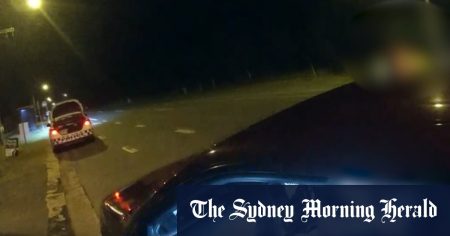Children aged 14 to 17 were responsible for 18,729 offences last year, most of which were committed by bored youngsters seeking kicks. The majority of car thefts during aggravated burglaries are recovered, indicating the theft was for joyriding rather than profit. Despite this, the trauma victims face when their home is invaded cannot be ignored. Police struggle to stop chronic offenders who are arrested and then bailed to commit further crimes. Deputy Commissioner Neil Paterson believes much of the offending is driven by a pursuit of notoriety or social media likes, calling for a removal of the carrot by taking away the chance for offenders to gain social media fame.
In the education sector, assaults in schools are on the rise, with the number of alleged assaults involving 10- to 16-year-olds increasing by 61% from 2022 to 2023. The devaluation of authority figures is evident in the attacks on teachers, leading some headmasters to wear body cameras to prove the violence occurring in schools. School assaults posted on social media can result in gang paybacks outside schools, with street gangs using videos to recruit members and adults threatening violence against students. There is a trend among underage offenders to use stolen cars as weapons, reflecting a concerning escalation of violence among youth.
Chief Commissioner Shane Patton highlights the increase in protests in Victoria, with police using nearly 8000 shifts to oversee demonstrations on various issues. Some protests become violent, with protesters aiming to provoke confrontations with riot police, who in turn respond with force. The violence seen in protests contrasts with well-organised and peaceful Invasion Day marches, showing the difference in effectiveness between peaceful and violent demonstrations. The use of social media to incite violence and provoke reactions from both protesters and police has shifted the focus of protests from meaningful expression to chaos and conflict.
The breakdown of societal norms and lack of accountability is evident in everyday interactions, such as public transport and pedestrian behavior. Self-entitled individuals disrupt public spaces without consequences, causing discomfort for others who are too intimidated to confront them. While there are instances of collective action against offenders, such as strangers stepping in to protect teenage girls from harassment, these actions are often driven by a sense of urgency rather than proactive prevention. Building a culture of accountability and setting standards for behavior is crucial to addressing the escalating violence and antisocial behavior in society.
In conclusion, the rise in youth crime, school assaults, and violent protests reflects a broader societal issue of a breakdown in authority and accountability. Social media has played a role in fueling youth offending and inciting violence, with platforms needing to take responsibility for their role in promoting criminal behavior. Addressing these issues requires a collaborative effort between law enforcement, educational institutions, communities, and businesses to implement preventative measures and address the root causes of antisocial behavior. Ultimately, setting standards for behavior and holding individuals accountable for their actions is key to creating a safer and more cohesive society.















